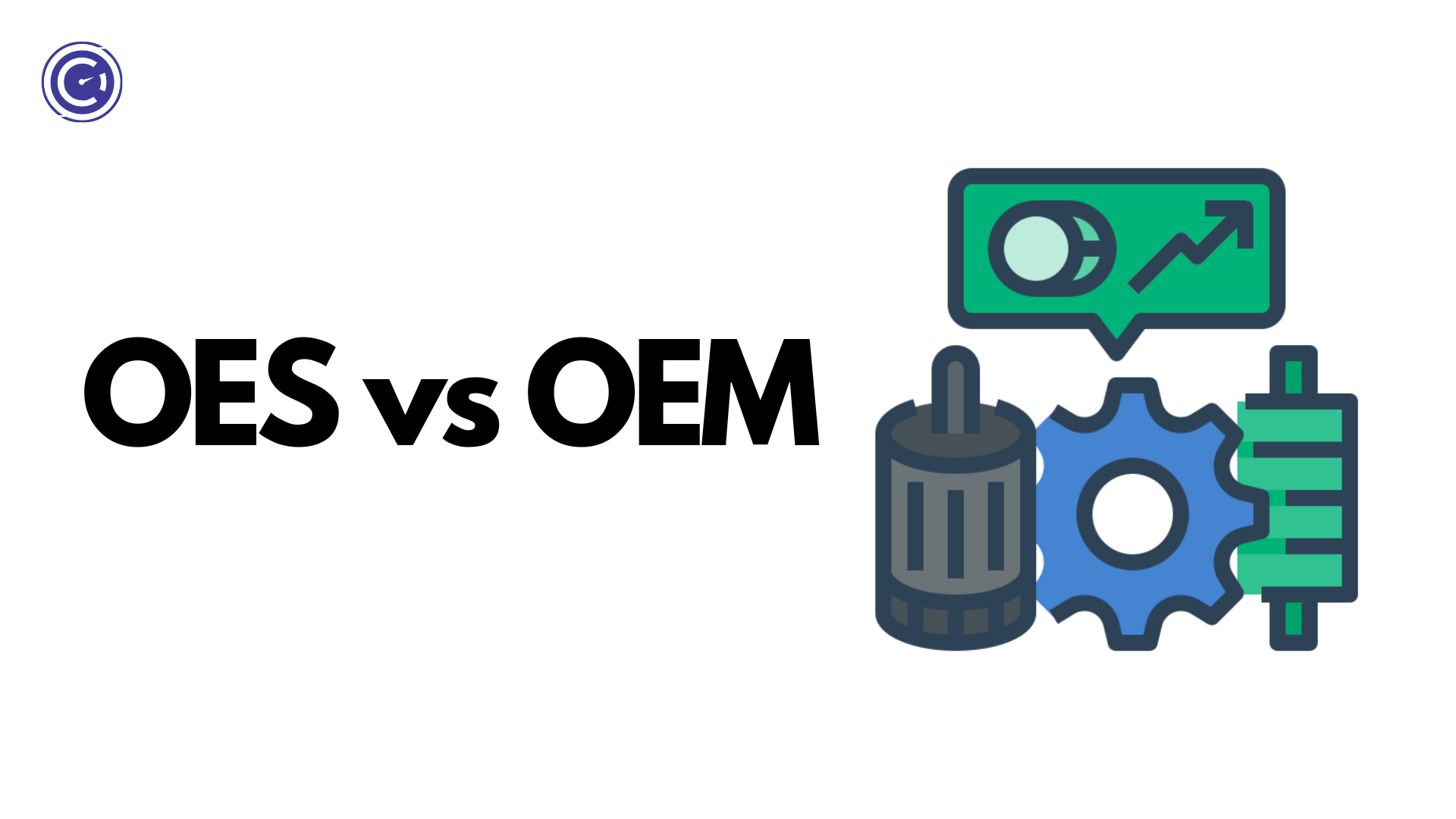When it comes to maintaining or repairing your vehicle, using the right parts is essential to ensure optimal performance and longevity. Two terms that often arise in this context are OES (Original Equipment Supplier) and OEM (Original Equipment Manufacturer). Understanding the difference between these terms and making informed choices can significantly impact the outcome of your automotive endeavors.
OES and OEM parts play a crucial role in the automotive industry, but many people may not fully grasp the distinction between them. This article aims to shed light on OES vs OEM, providing clarity and guidance for individuals seeking to make the best choices for their vehicle’s maintenance and repairs.
OES parts are components manufactured by companies that supply parts directly to vehicle manufacturers. These parts are often designed to meet or exceed the specifications set by the original equipment installed in the vehicle. On the other hand, OEM parts are manufactured by the original equipment manufacturer themselves, the very same company that produced the parts used in the vehicle’s initial assembly.
The decision between OES vs OEM parts can be influenced by factors such as availability, pricing, quality, and personal preferences. By understanding the differences and considering these factors, you can make informed choices that align with your specific needs and circumstances.
In the following sections, we will delve deeper into the definitions, pros and cons, key differences, and factors to consider when choosing between OES and OEM parts. Armed with this knowledge, you will be empowered to navigate the automotive parts market with confidence and ensure that your vehicle receives the best possible care.
Table of Contents
OEM vs OEM

What are OES Parts?
A. Definition and Explanation
Overview of OES (Original Equipment Supplier) parts:
- Definition: OES parts are components manufactured by companies that supply spare parts directly to vehicle manufacturers.
- Role of OES parts: OES parts serve as alternatives to OEM parts and are designed to meet or exceed the specifications set by the original equipment installed in the vehicle.
- Examples of OES parts: Examples of OES parts include engine components (spark plugs, piston rings, seals, etc), electrical systems (Switches, bulbs, lights, etc.) suspension parts, brake pads, filters, and more.
Recommended – Top 11 Essential Tools to Keep in Your Car
Relationship between OES parts and vehicle manufacturers:
- Supply chain: OES parts are often sourced from manufacturers who have established relationships with vehicle manufacturers.
- Quality standards: OES parts are expected to meet the same quality standards as the original equipment used in the vehicle’s assembly.
- Compatibility: OES parts are designed to be compatible with specific vehicle makes and models.
B. Pros and Cons of OES Parts
Advantages of OES parts:
- Quality assurance: OES parts are manufactured by companies that specialize in producing automotive components, ensuring high-quality and reliable performance.
- Cost-effectiveness: OES parts often provide a more affordable option compared to OEM parts while still maintaining good quality.
- Availability: OES parts are widely available through various suppliers and can be easily obtained for vehicle maintenance and repairs.
- Warranty coverage: Some OES parts come with warranty coverage, providing additional peace of mind to vehicle owners.
Disadvantages of OES parts:
- Limited brand variety: OES parts may have a more limited selection of brands compared to OEM parts, which could affect personal brand preferences.
- Potential variations in quality: While OES parts are designed to meet or exceed OEM specifications, the quality can vary between manufacturers. Research and selecting reputable suppliers are crucial to ensure reliable parts.
- Lack of vehicle-specific branding: OES parts may not have the vehicle-specific branding or logos found on OEM parts, which can be a consideration for those who prefer a cohesive look.
Recommended – CVT vs DCT. Your 10 Min Guide to Choosing the Right Car
What are OEM Parts?
A. Definition and Explanation
Overview of OEM (Original Equipment Manufacturer) parts:
- Definition: OEM parts are components that are manufactured by the same company that produced the original equipment installed in the vehicle during its assembly.
- Significance in vehicle manufacturing: OEM parts are an integral part of the vehicle manufacturing process, as they ensure compatibility, quality, and consistency.
Importance of OEM parts in vehicle manufacturing:
- Compatibility: OEM parts are designed to fit perfectly and function seamlessly with the specific make and model of the vehicle.
- Quality assurance: OEM parts undergo rigorous testing and adhere to strict quality standards set by the vehicle manufacturer.
- Reliability and performance: OEM parts are engineered to meet the exact specifications and performance requirements of the vehicle, resulting in optimal performance and safety.
B. Pros and Cons of OEM Parts
Advantages of OEM parts:
- Genuine and reliable: OEM parts are guaranteed to be genuine and offer a higher level of reliability compared to other aftermarket options.
- Consistency and fitment: OEM parts ensure a precise fit, as they are specifically designed for the vehicle’s original specifications.
- Warranty coverage: OEM parts typically come with warranty coverage, providing added protection and peace of mind.
- Support from vehicle manufacturers: OEM parts benefit from the support and expertise of the vehicle manufacturer, including technical assistance and access to the latest updates.
Potential drawbacks or considerations when using OEM parts:
- Higher cost: OEM parts are generally more expensive than aftermarket alternatives due to their brand reputation, quality assurance, and warranty coverage.
- Limited availability: OEM parts may be less readily available compared to aftermarket parts, especially for older or less common vehicle models.
- Brand restrictions: OEM parts are often associated with specific vehicle brands, limiting options for customization or preference for different brands.
- Variation in pricing: Some dealerships or suppliers may price OEM parts differently, so it is recommended to compare prices from different sources.
OES vs OEM: Key Differences
A. Quality and Standards
Comparison of quality and manufacturing standards between OES and OEM:
- OES parts: OES parts are produced by manufacturers approved by the vehicle manufacturer. They are expected to meet specific quality standards set by the vehicle manufacturer.
- OEM parts: OEM parts are manufactured by the same company that produced the original equipment installed in the vehicle during assembly. They adhere to the strict quality standards and specifications set by the vehicle manufacturer.
Recommended – The Beginner’s Guide to OBD: How OBD Works?
How these differences affect part performance and compatibility:
- OES parts: While OES parts are designed to meet the vehicle manufacturer’s quality requirements, they may not always match the exact specifications of OEM parts. This can affect their performance and compatibility.
- OEM parts: Since OEM parts are produced by the original equipment manufacturer, they are designed to precisely fit and function in the vehicle. This ensures optimal performance and compatibility.
B. Availability and Pricing
Availability of OES and OEM parts in the market:
- OES parts: OES parts are often available through authorized dealerships or suppliers approved by the vehicle manufacturer. They may have limited availability compared to OEM parts.
- OEM parts: OEM parts are generally more widely available through authorized dealerships, online retailers, and aftermarket suppliers.
Price differences and factors influencing pricing:
- OES parts: OES parts may be priced lower than OEM parts, making them a more cost-effective option in some cases. However, their pricing can still vary depending on the manufacturer, specific components, and other factors.
- OEM parts: OEM parts tend to be more expensive due to their brand reputation, quality assurance, and warranty coverage. Additionally, factors such as exclusivity, demand, and supply chain logistics can influence their pricing.
Recommended – A Comprehensive Guide to Choosing the Right OBD Scanner for Your Vehicle
Factors to Consider When Choosing Between OES and OEM
A. Vehicle Warranty and Maintenance
Impact of OES and OEM parts on vehicle warranties:
- OES parts: OES parts, being approved by the vehicle manufacturer, are less likely to void the vehicle’s warranty. They are designed to meet the manufacturer’s specifications and requirements.
- OEM parts: OEM parts, being the original equipment installed in the vehicle, generally do not void the warranty. They are considered the manufacturer’s recommended replacement parts.
Maintenance considerations with regard to OES and OEM parts:
- OES parts: OES parts can be easily serviced and maintained at authorized dealerships or service centers. They are designed to fit and function correctly, simplifying the maintenance process.
- OEM parts: OEM parts offer seamless integration into the vehicle’s systems, making maintenance straightforward. They are readily available through authorized dealerships, ensuring genuine replacements when needed.
Recommended – Top 5 Most Common Signs of Bad Suspension
B. Personal Preferences and Needs
Individual considerations when selecting OES or OEM parts:
- Cost: OES parts tend to be more affordable than OEM parts, making them an attractive option for budget-conscious individuals.
- Performance: OEM parts are designed to meet the highest standards set by the vehicle manufacturer, ensuring optimal performance and reliability.
- Availability: OEM parts are generally more widely available, allowing for easier access when replacements are required.
- Brand loyalty: Some individuals prefer OEM parts due to brand loyalty or the desire to maintain the vehicle’s originality.
Factors such as cost, performance, and availability:
- Cost: OES parts may provide a more cost-effective solution, especially for older vehicles or repairs not covered by warranties.
- Performance: OEM parts are specifically engineered for the vehicle, delivering the highest level of performance and compatibility.
- Availability: Consider the availability of OES and OEM parts in your region, ensuring easy accessibility when needed.
Recommended – 5 Symptoms Of a Bad ABS System You Should Look Out For
Conclusion
In conclusion, the choice between OES vs OEM parts is a crucial decision that vehicle owners must make. Both options have their advantages and considerations, and it ultimately comes down to personal preferences, needs, and budgetary constraints. It’s important to consider these factors and conduct research or seek advice from authorized dealerships or automotive experts to make an informed decision. Ultimately, both OEM and OES parts can be viable options depending on individual circumstances and preferences.
By understanding the differences between OEM and OES parts, considering the factors mentioned above, and prioritizing your specific needs, you can confidently choose the right parts for your vehicle. Whether you opt for OEM or OES, the goal is to maintain the performance, safety, and longevity of your vehicle for years to come.

